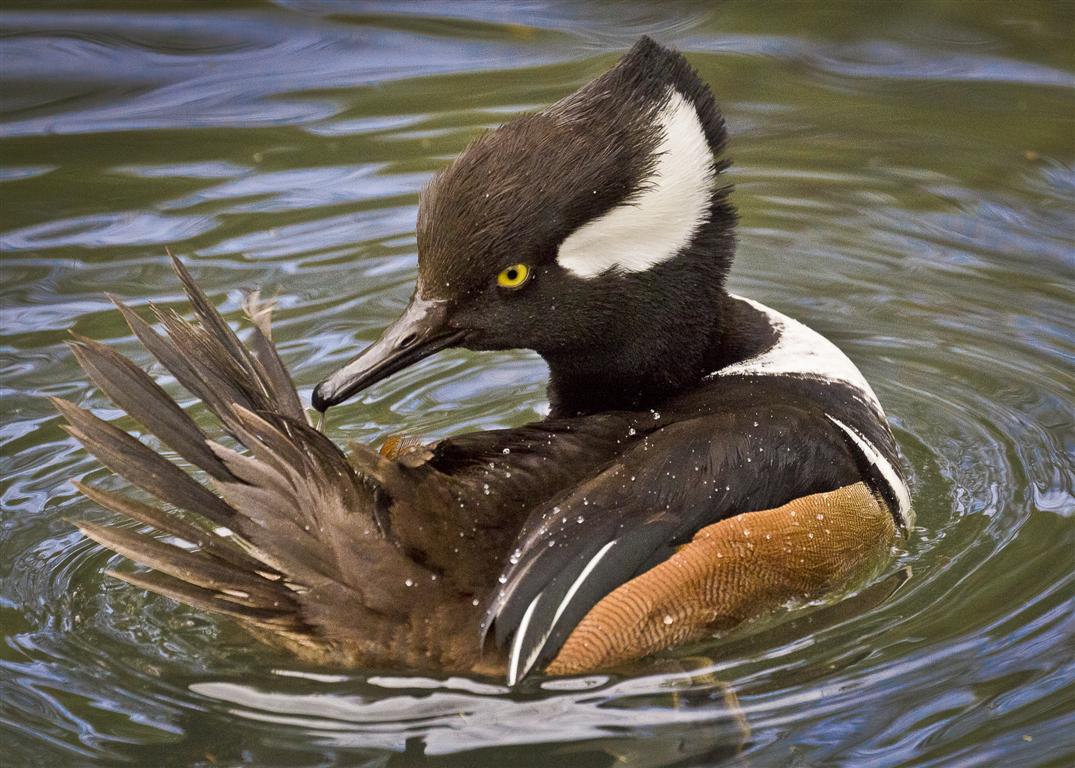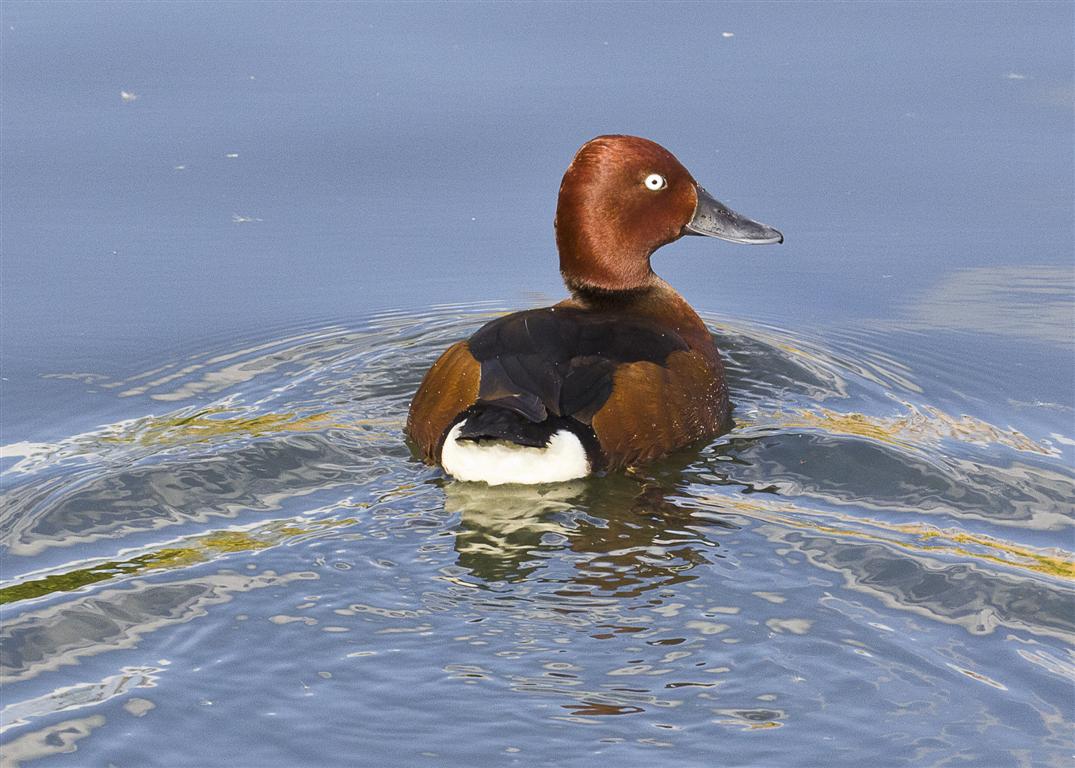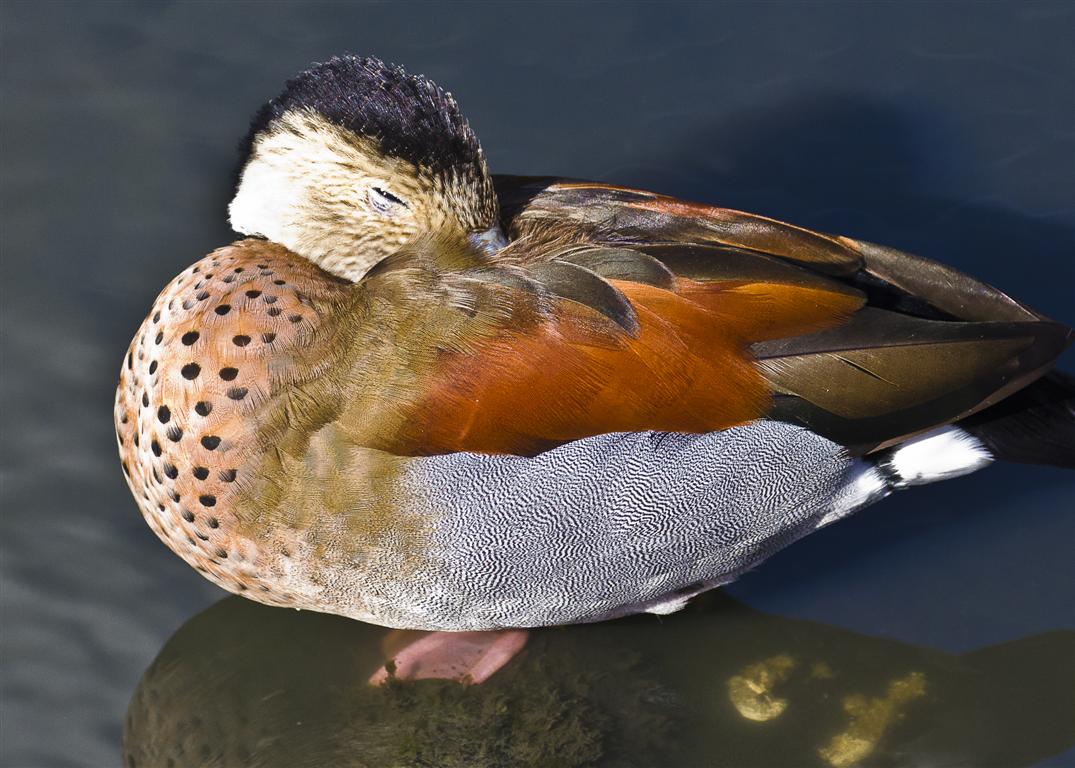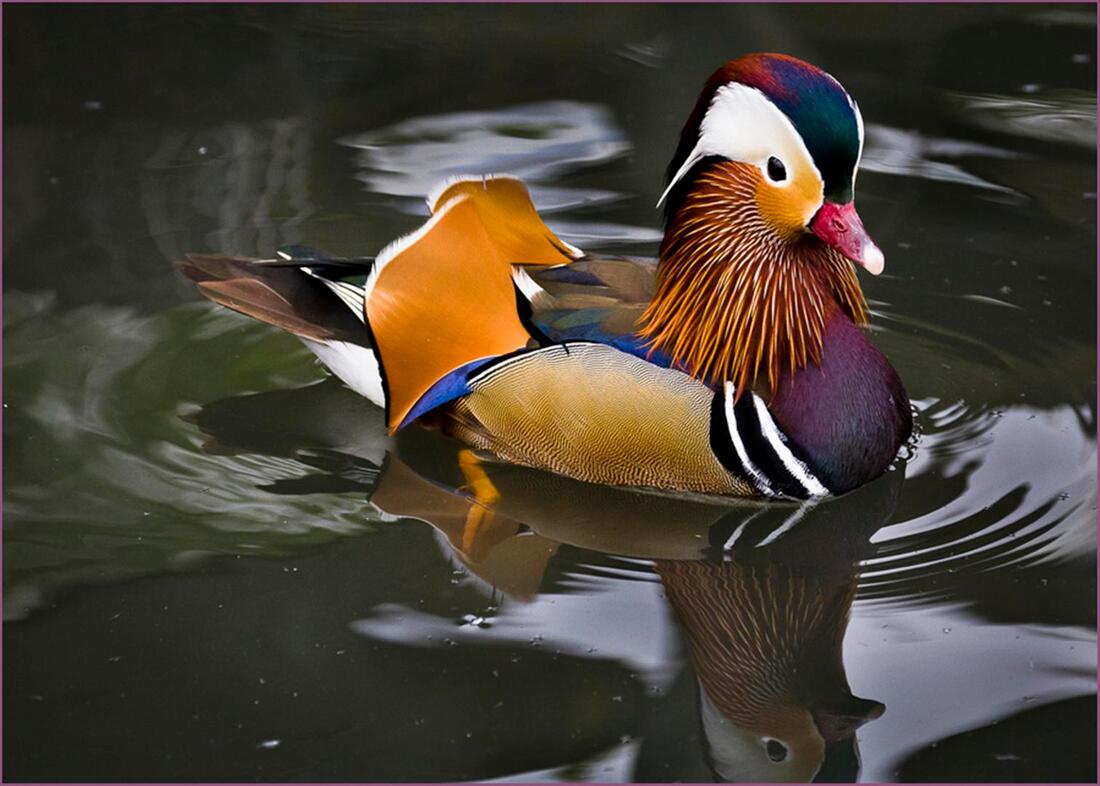"London Wetlands: The Beauty of Waterowl"
A series for the exhibition "Luminous 2019,"
Heliconian Hall, October 2019

This series seeks to capture the postures, the feathers, the engagement with water and each other, the comfort within their own bodies – the sheer beauty – of waterfowl. These are what drew me to them as a photographic subject. But I have a personal story. It began with my father Colin Stamp's involvement in the creation, on the site of four disused Victorian reservoirs in Barnes, Southwest London (part of the Thames River marshland of prehistoric London), of the London Wetland Centre. My father, always an enthusiastic environmentalist in the neighbourhood where he lived for over thirty years, joined Sir Peter Scott's team to found one of the Wildfowl and Wetlands Trust's nine wetland centres around the UK. The hundred acres have become an oasis in the city, attracting birds that live nowhere else in the southeast, along with those common across Eurasia, and providing a home to endangered wildfowl species from around the world. As a birdwatcher from my twenties, I have loved going to the Wetlands whenever I visit my family in London, and last year, following my nephew's wedding, I went twice, these pictures being the result. You can learn more about the Centre at www.wwt.org.uk/wetland-centres/london/
As for the birds, they are magic. Some are captive in the Wetlands, especially the rare and endangered ones, like the Red-Breasted Goose and the Hawaiian Goose. Many fly in and out on their own accord. It is a mashup of prehistoric Thames marshes and an international waterfowl party. The birds in my London Wetlands Series have been selected for their beauty (and the felicity of my camera shutter), not their rarity or newsworthiness.
These pictures are framed, on fine art canvas. Please contact Patricia if you would like them on a different medium.
As for the birds, they are magic. Some are captive in the Wetlands, especially the rare and endangered ones, like the Red-Breasted Goose and the Hawaiian Goose. Many fly in and out on their own accord. It is a mashup of prehistoric Thames marshes and an international waterfowl party. The birds in my London Wetlands Series have been selected for their beauty (and the felicity of my camera shutter), not their rarity or newsworthiness.
These pictures are framed, on fine art canvas. Please contact Patricia if you would like them on a different medium.
"London Wetlands: Northern Pintail"
Widespread in the boreal areas of North America and Eurasia, it winters further south across the U.S., Mexico, Southern Europe and North Africa.
Widespread in the boreal areas of North America and Eurasia, it winters further south across the U.S., Mexico, Southern Europe and North Africa.
"London Wetlands: Hooded Merganser"
A small waterfowl of North America, migrating short distances
in the East and the West.
A small waterfowl of North America, migrating short distances
in the East and the West.
"London Wetlands: Ferruginous Duck"
A Eurasian bird, now scarce in Western Europe; its breeding range is from the Iberian Peninsula and North Africa to Western Mongolia. It winters in the Mediterranean Basin and the Red Sea.
A Eurasian bird, now scarce in Western Europe; its breeding range is from the Iberian Peninsula and North Africa to Western Mongolia. It winters in the Mediterranean Basin and the Red Sea.
"London Wetlands: Plumed Whistling Duck"
A gregarious Australian tree duck of the North and East;
also in New Guinea and New Zealand.
A gregarious Australian tree duck of the North and East;
also in New Guinea and New Zealand.
"London Wetlands: Red-Crested Pochards"
Mating. Breeds in Southern Europe and Central Asia, and
winters in the Indian sub-continent.
Mating. Breeds in Southern Europe and Central Asia, and
winters in the Indian sub-continent.
"London Wetlands: Ringed Teal"
A small forest duck of South America, breeding in Northwest Argentina, Southern Brazil and Paraguay. Adapted over many generations to captivity, it can now thrive in the colder climate of Great Britain.
A small forest duck of South America, breeding in Northwest Argentina, Southern Brazil and Paraguay. Adapted over many generations to captivity, it can now thrive in the colder climate of Great Britain.
"London Wetlands: Mallards"
Familiar to us all; they are ubiqitous across North America and Eurasia, and, beautiful as they are, have unfortunately been introduced widely across the Southern Hemisphere, where their interbreeding with local species, such as the New Zealand Black Duck, is driving some of the latter towards extinction. One of the bird species, along with European Starlings, European Sparrows and Canada Geese, that thrive around humans and cities – crowding indigenous
species from their niches.
Familiar to us all; they are ubiqitous across North America and Eurasia, and, beautiful as they are, have unfortunately been introduced widely across the Southern Hemisphere, where their interbreeding with local species, such as the New Zealand Black Duck, is driving some of the latter towards extinction. One of the bird species, along with European Starlings, European Sparrows and Canada Geese, that thrive around humans and cities – crowding indigenous
species from their niches.
"London Wetlands: Hawaiian Geese"
Called "Nênê" by the Hawaiians, it is thought to have evolved from the Canada Goose (go figure! It sure doesn't look like it.) Branta canadensis would have arrived on the Hawaiian volcanic islands after they emerged from the sea about 500,000 years ago. This charismatic species is on its own a reason for the London Wetlands to exist. The 25,000 Hawaiian geese living on the islands in 1778 were decimated after the arrival of Europeans. They were killed by hungry, seafaring humans and mongooses introduced to the islands. By 1949 Only thirty geese were left. The Wildfowl and Wetlands Trust (WWT), founded in 1946 by legendary naturalist Sir Peter Scott, the creator of the London Wetlands, was key to the captive breeding of the goose. From the 60s to the 80s and the present, the London Wetlands have been key to the recovery of Nênê in Hawaii, to about 2000 birds today. Link to the WWT's engagement in bringing back wildfowl from the brink: www.wwt.org.uk/who-we-are/our-history/
Called "Nênê" by the Hawaiians, it is thought to have evolved from the Canada Goose (go figure! It sure doesn't look like it.) Branta canadensis would have arrived on the Hawaiian volcanic islands after they emerged from the sea about 500,000 years ago. This charismatic species is on its own a reason for the London Wetlands to exist. The 25,000 Hawaiian geese living on the islands in 1778 were decimated after the arrival of Europeans. They were killed by hungry, seafaring humans and mongooses introduced to the islands. By 1949 Only thirty geese were left. The Wildfowl and Wetlands Trust (WWT), founded in 1946 by legendary naturalist Sir Peter Scott, the creator of the London Wetlands, was key to the captive breeding of the goose. From the 60s to the 80s and the present, the London Wetlands have been key to the recovery of Nênê in Hawaii, to about 2000 birds today. Link to the WWT's engagement in bringing back wildfowl from the brink: www.wwt.org.uk/who-we-are/our-history/
"London Wetlands: Mandarin Duck"
A perching duck native to the East Paleartic, but found elsewhere in
the world now. One of these was a sensation in the pond in Central Park,
New York, recently!
A perching duck native to the East Paleartic, but found elsewhere in
the world now. One of these was a sensation in the pond in Central Park,
New York, recently!
"London Wetlands: Tufted Duck"
A small diving duck of Northern Eurasia, it sometimes winters on both coasts of North America, and its range is expanding because of the proliferation of invasive fresh water mussels, such as zebra mussels, which arrived here in the discharged ballast water of ocean freighters.
This picture is on acetate, and is transparent, for hanging in
a window or before a light source
A small diving duck of Northern Eurasia, it sometimes winters on both coasts of North America, and its range is expanding because of the proliferation of invasive fresh water mussels, such as zebra mussels, which arrived here in the discharged ballast water of ocean freighters.
This picture is on acetate, and is transparent, for hanging in
a window or before a light source










